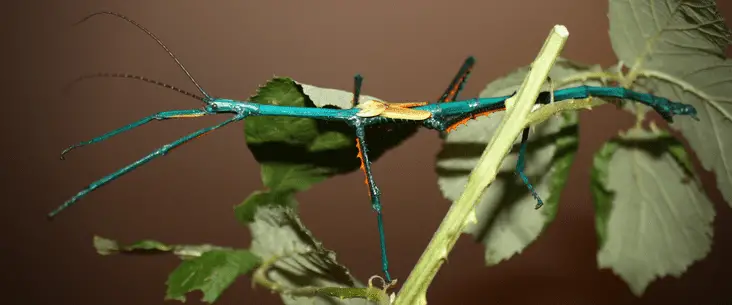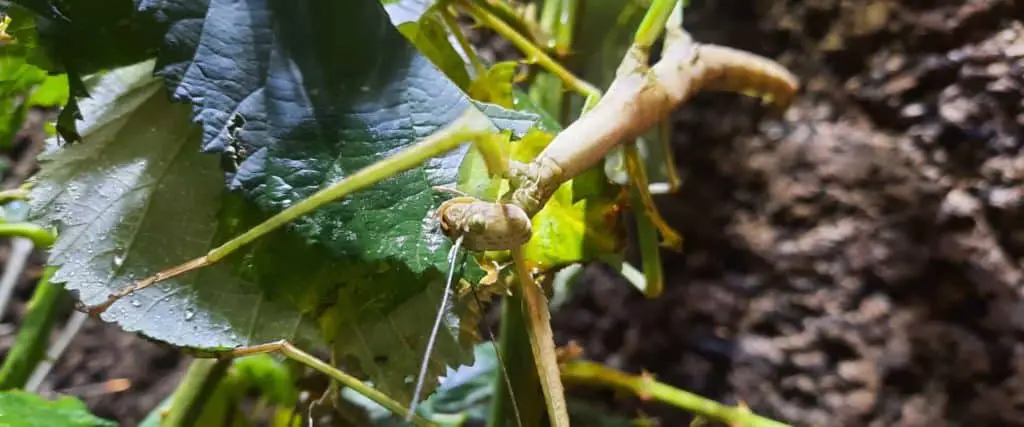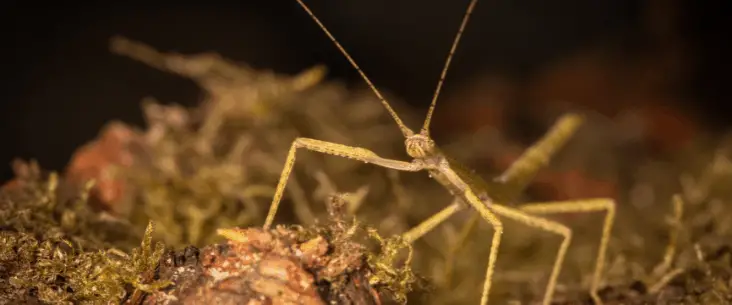When you search for different species of stick insects — also called stick bugs, walking sticks or phasmids — you find that many of them have wings. But have you ever seen one flying? You are probably wondering if they can fly at all. But why else do they have wings? When I researched the ability of flying, the answers were pretty surprising.
Generally, stick insects that possess full-grown wings can fly but don’t do very often. However, not all stick insects have wings and the species that have them almost only the males possess full-grown wings. There is a great diversity in wing size, and many have a reduced wing size.
Stick insects can fly, but besides flying, wings are also used for gliding and parachuting. And wings are also used for more than flying alone. We will explain all of that, but first, why do stick insects fly in the first place?
Why do stick insects fly?
Flight, in general, enhances the acquisition of resources, the dispersal of the species, and escape or evade predators. It is the same with stick insects. They fly for mainly three reasons: easy access to food sources, to escape from predators and to reproduce.
Wings are a logical necessity when the species is less dense, or food availability is more widely spread. You often see that species that are more habitat-persistent, have a higher fecundity or have fewer predators, also have lost their wings (partly). They do not need to fly to achieve survival success.
Funny enough, researchers (Whiting, Bradler and Maxwell, 2003) found that almost all stick insects today come from a common (winged) ancestor that had lost his wing. Quite astonishing is the fact that some stick insects have regained their wings and even their ability to fly. That is quite unique in evolution and seldomly seen before in evolution theory. So, while most stick insects don’t have wings, some regain the ability to fly. Around 40% of the 3000 species of phasmids are fully winged.
Stick bug wings: More than flying alone!
Wings of stick insects have evolved into more than only a flying apparatus. Some stick insects do have wings but don’t use them for flying. No, there is more to it.
Wings are also used for gliding and parachuting. Where long (full-)sized wings are used for ascending flights, medium-sized wings are often used for gliding. Other more smaller wings are used as a sort of parachuting, where the wings are to soften the landing when falling down. Parachuting is often used as an attempt to escape from predators, without injuring on the landing.
But when you look at different stick insect species, you find that many have small (miniaturised) wings that are often colourful. These wings have nothing to do with flying anymore, nor parachuting. No, this type of wings is used for startle display — a sudden display of the wings with conspicuous colours with the main purpose to scare off or momentarily distract predators.
Another way a stick bug uses its wings to scare off predators is stridulation. The animal makes a sound by rubbing its wings quickly together or alongside its body.
So, besides using wings to fly to find food and mates to reproduce, some species also use their wings to evade or scare off predators. However, many stick insects don’t have wings and completely trust on their camouflage to avoid predation, or have developed other defences like thorn-like appendages or spray a smelling chemical when feeling threatened.
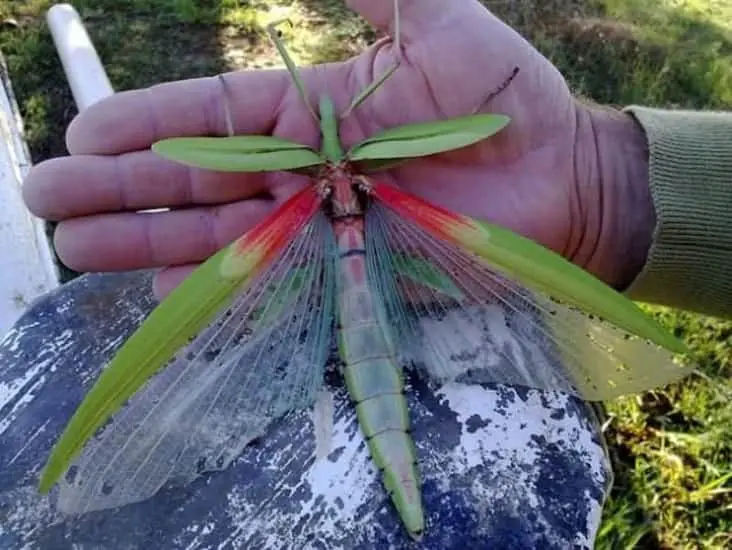
Do pet stick insects also fly at home?
There is a possibility that your pet stick insects will fly. Although they don’t a need to fly, because the food will always around and oftentimes (at least when you wish to breed), you have females in close proximity of males.
Still, some will try to fly, especially when feeling threatened. For example, males of the giant prickly stick insect (Extatosoma tiaratum) will use their wings to escape when they are handled and don’t like that. However, they are quite clumsy when they fly. It is more a way for them to escape the situation.
As the name suggests, yellow flying stick insect (Necroscia annulipes) is another stick bug that is known to be able to fly. Especially when handled, they often try to fly away.
Some species are quite skittish, and when feeling threatened or when startled will attempt to fly away from you. When you have such a species at home, it would be good to approach them carefully. Enclosures at home are too small for them to make a proper flight.
If you don’t like flying insects, but still like to have this wonderful species as a pet, you should choose a species that does not have wings or less-developed wings. This way, you’ll be sure they don’t start flying. Several stick insect species have miniaturised wings that have beautiful colours, like black beauty stick insect (Peruphasma schultei) or Achrioptera fallax.
Why female stick insects oftentimes don’t have wings
You may be wondering why in many cases only males have full-grown wings. Wing dimorphism — meaning a difference between male and female — can have a couple of reasons.
Stick insects don’t move especially fast and won’t move large distances. And when to find a mate to breed, they sometimes need to travel large distances. Wings come in handy to do so. It also allows for greater success in dispersal. Besides that, stick insects don’t have such a long lifespan, so their time is somewhat limited to find a female to produce offspring.
Studies revealed that when the fecundity increases, will favour wing reduction in females which increase wing dimorphism.
Within some species, there is a certain male to male competition. Wings are a tool that is used to compete with each other. Think of imposing behaviour, but also the ability to fly in a fight. For some species, this is the reason males have wings, and where females don’t have to compete with each other don’t have wings.
The wing development of males is never less than females. Suppose the male doesn’t have wings, the females surely have no wings. The other way around is more common; that a female has no or less developed wings, but the male has (fully-developed) wings.
A Tale of Winglets: Evolution of Flight Morphology in Stick Insects
If you like to know more about the (evolution on the) morphology of wings in stick insects, I can recommend you to read this research article!
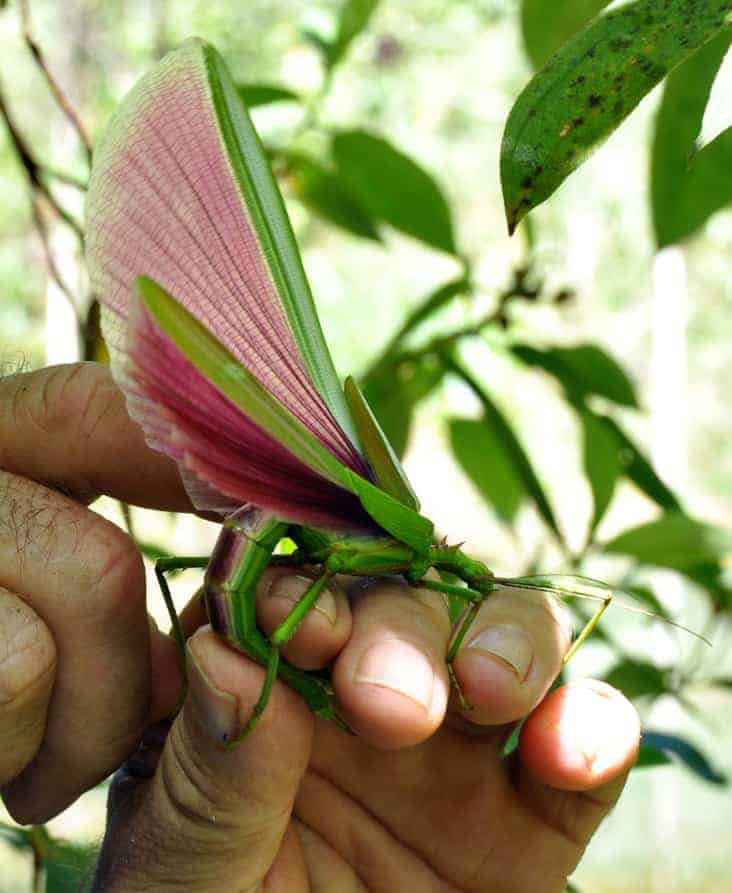
Which stick insects can fly?
There are quite a few stick insects that can fly and possibly do when you keep them at home. Below you will find a list of several stick insects that can fly which are regular kept in captivity.
- Pink wing stick insect (Sipyloidea sipylus)
- Yellow flying stick insect (Necroscia annulipes)
- Giant prickly stick insect (Extatosoma tiaratum)
- Asceles tanarata
- Pseudophasma rufipes
- Jungle nymph (Heteropteryx dilatata)
- Goliath stick insect (Eurycnema goliath)
- Children’s stick insect (Tropidoderus childrenii)
- Javanese lichen stick insect (Pseudodiacantha macklottii)
Want to learn more?
Interested in keeping stick insects as pets? They make great, fascinating and easy pets to have. But it is important first to learn more about how you should keep and care for them. In the basics guide about caring for your stick insect, you find all you need to know to start keeping these wonderful animals as pets.
If you like to know more about the (evolution on the) morphology of wings in stick insects, I can recommend you to read this research article!
Share this page!

